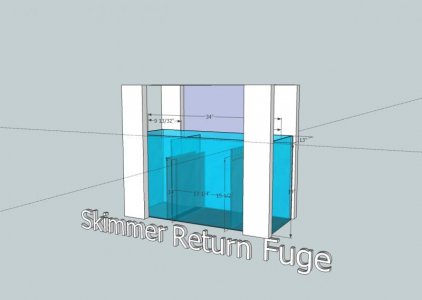scubasamdo
New member
For the valve, this is a piece of equipment that you don't skimp on. Get a spears dual union ball valve or a gate valve. you only need one, just for the siphon. Spend the extra money you will be happy you did, trust me.
As far as the top goes, the reason I asked if you didn't care is that in order to make the top opening bigger, you're going to have to reinforce it. The first thing is that slot cutout in the back is ridciulously small, not sure what purpose that was supposed to have served unless you wanted to use your kid to reach in and get something. But expanding that out is going to weaken the structure, so I would plan out how big and where you want the cutout to be, then I would expand the existing hole to that size and then laminate another piece of acrylic over the top of that new hole. You should not need to laminate across the entire top, but if you did, you might also be able to expand the larger opening.
I would need a top-down shot to see where you could expand to and what new euro you would want to laminate on to it.
As far as making it look pretty, it is easy to give it the nice polished edge look afterwards.
you will need some scrap acrylic to double-stick-tape (intertape brand) to the inside underneath and then a 1/4" flush trim bit (spiral upcut, if you can get it) to make the cuts. Don't freehand it - asking for trouble IMO.
Turbo knows acrylic well. Good advice from him on your original thread.

